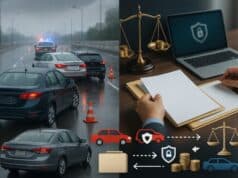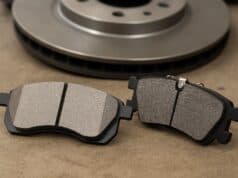Modern vehicles store more information than most drivers realize. Built-in sensors track how the car moves, reacts, and responds to changing conditions. This data becomes essential when collisions occur and responsibility is unclear. It often plays a significant role when you need to explore your legal rights after an auto accident and understand what truly happened.
The Increasing Role of Vehicle Technology
Today’s cars are equipped with advanced systems that constantly gather information. These systems monitor speed, braking, steering, and surrounding traffic. They create a detailed record of the vehicle’s behavior.
This data supports safety features such as lane assistance and automatic braking. It also provides insight into how the car responded before a crash. Investigators now rely heavily on this information because it offers an objective view of events.
How Sensor Data Captures Critical Details
Vehicle sensors track moment-by-moment changes. They record when the car accelerated, slowed, or swerved. They also document whether safety systems were activated. This provides a clear picture of how the driver reacted.
It shows whether the person attempted to avoid the crash or remained steady. Such details are difficult to remember during stressful events. Sensors fill in these gaps with precise information.
Understanding Driver Input Through Digital Logs
Modern cars record steering wheel movement and brake pressure. These logs reveal how quickly or firmly the driver responded. These details help explain whether the driver acted responsibly.
A sudden turn or late braking may indicate distraction or unexpected danger. This information helps investigators understand the driver’s role in the incident. It adds context that witnesses may not notice.
The Value of Collision Avoidance System Data
Cars now include features designed to prevent crashes. Sensors detect nearby vehicles, warn drivers, and activate emergency braking. When a crash occurs, investigators examine whether these systems engaged.
If a warning sounded or a brake assist was activated, it becomes part of the case. This information can indicate whether the technology worked properly. It may also show whether the driver ignored essential warnings.
How Environmental Sensors Influence Investigations
Some vehicles collect information about road and weather conditions. They detect slippery surfaces, low light, and reduced traction. This helps explain why specific actions happened.
A driver may have lost control because the surface was wet, not because of negligence. These environmental readings add another layer of clarity. They show how external conditions contributed to the crash.
When Data Contradicts Statements
After an accident, people often struggle to remember details clearly. Stress and confusion can affect their statements. Vehicle sensor data sometimes contradicts these accounts. It may show higher speeds, sudden movements, or missed warnings.
This helps investigators build an accurate version of events. It also prevents misunderstandings from influencing conclusions.
Investigating Mechanical Issues With Sensor Data
In some cases, accidents occur due to mechanical failure. Sensors can show when systems malfunction. Sudden drops in brake pressure or steering failures leave digital traces. This helps determine whether the vehicle contributed to the crash.
It may reveal defects that drivers were unaware of. Understanding these failures is essential in complex cases. It ensures the correct party is held responsible.
How Data Helps Reconstruct the Accident
Sensor data enables experts to reconstruct the moments before impact. They can trace the vehicle’s path and reactions. This reconstruction helps answer key questions. It shows how fast the car was going and when the driver attempted to respond.
Such reconstructions offer more accuracy than verbal descriptions alone. They help investigators see the event from all angles.
The Role of Data in Multi-Vehicle Collisions
Multiple vehicle crashes often involve conflicting stories. Each driver may believe the other caused the incident. Sensor data helps cut through these disagreements. It shows how each vehicle moved and reacted in the seconds leading up to the crash.
This makes it easier to determine fault. It also helps identify whether any drivers acted recklessly or unpredictably.
Privacy Concerns and Data Access
Although sensor data is helpful, accessing it can be challenging. Car manufacturers may require formal requests. Drivers may not know the information exists. Privacy concerns also arise because the data can reveal sensitive behavior.
Despite these challenges, the information can be crucial for fair investigations. It ensures that decisions are based on facts rather than assumptions.
Final Thoughts
Hidden sensor data in modern vehicles provides valuable insight into how accidents occur. It reveals details that witnesses may miss and drivers may forget. These digital records often guide investigators toward accurate conclusions. They are essential when people need to explore your legal rights after an auto accident and rely on clear evidence to understand what happened.






